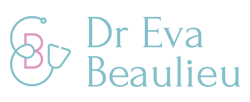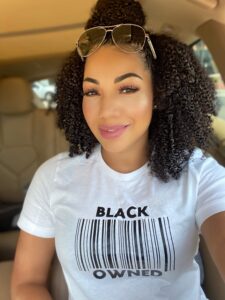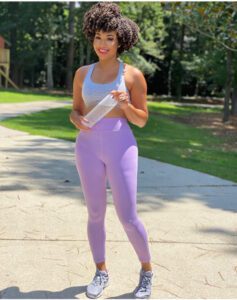Making improvements on anything in our life takes some kind of currency. When we invest, whether it’s time or money, we put something in with the expectation that we’ll get something out.
So, what are ways you can invest in yourself —ways that you can “afford to spend” your time and/or money? And, to take it a step further, how can we justify what we can “afford”?
When we look at our personal and professional growth up until this point, the only way we achieved those things is through some kind of investment. We either spent years training, years studying, or years saving to get to where we are right now.
And, when we start from scratch, meaning having no training, we’ve been conditioned through life that it’s the natural next step to get trained by someone.
As an infant, we were trained by our parents. As a kid, we were trained by our school. We didn’t have choices regarding how we got our training. In the beginning, investing in ourselves to grow and succeed is a natural part of life.
But what’s interesting is that once we have the foundational training on something, like we “know how to do it”, the next step to get better at it becomes a choice. And depending on what skill we want to improve on and the benefit it brings to our life, we decide if we can “afford it” or not.
So if the outcome is greater than the cost of the investment (time or money), then it becomes worth the expenditure. If it’s worth it, we don’t mind paying.
…But here’s the thing… we don’t always see the result right away, and that makes the decision to invest in ourselves or not a difficult one.
Here are ways you can invest in yourself and how the outcome might look
Invest in yourself through fitness
No pain no gain, and we all know it. We get results when we put in the time, effort, dedication, and consistency. That is an investment in itself.
But when we do not see results, or they’re not happening fast enough, we’ve got to ask ourselves why. Often the answer is one we can’t reach alone.
…So really, that time spent getting fit —or not getting as fit as we’d like, could’ve been minimized by getting help. We could keep trying to do it alone, but it’ll take a forever long time, as it likely already has.
Picture this, you work out at home sometimes. Not quite as much as you’d like, but enough. You know you could work harder, run longer, and lift heavier if your conditions were different in some way.
Investing in your fitness could include buying a gym membership so you can leave your house to work out and stay more focused or attending gym classes where you have the encouragement, camaraderie, and accountability of a workout group to motivate you. You could also hire a trainer for expert guidance and accountability.
You’ll find that results appear quicker if you improve your current strategy and invest in yourself. The outcome is that you feel happy with how your clothes fit, you’re proud of your discipline, and the joy and comfort are worth every penny.
Invest in yourself through learning
The great thing about the world we live in today is that we can learn anything we want with the click of a button. And while it’s convenient, it’s not always complete. Meaning we find ourselves gathering information from multiple sources and absorbing as much as we can. In doing so, sometimes we get “shiny object syndrome” and get distracted easily, going off on Google tangents and losing focus on what we were initially trying to learn. We start learning different methodologies to get the same result, causing inconsistency and uncertainty.
Self-learning is excellent, but it lacks structure. This is where school comes in. It’s specific. It’s start to finish. The goal is defined and often associated with measurable results.
When we invest in ourselves through learning, we speed up the learning process and get results sooner. We could attend structured classes, take classes online, hire a mentor, coach, or expert to train us. Yes, we pay time and money for this training, but there’s a “true” finish line, a well-defined skillset learned, and measurable results… in less time with more confidence.
So now, we can take our new or improved skillset and bring in the money. We end up repaying ourselves the amount we spent on the investment to improve and everything we gain on top of that is equity.
Invest in your finances
Paying to learn how to manage our money is a tough pill to swallow if we don’t have any spare cash to begin with. So what happens is that we try to manage our money on our own in a vicious cycle of trying and failing and never really getting ahead.
Let’s say we pay for a personal finance lesson or pay for someone to manage our finances for us. Or, perhaps we hire a coach to guide us through it.
The upfront investment might feel “uncomfortable”, but the result has us light years from where we are right now. Our bills are paid, we’re actually saving money for the first time in a long time, and we sleep better at night. Our relationships are even better because our relationship with money is better.
Invest in your relationships
Most of us know that what we put in is what we get out when it comes to our close relationships. I’m not talking about the ones we clearly need to walk away from because they don’t serve us. I’m talking about investing in the ones that matter.
If we’re having difficulty connecting, talking it through, and understanding where each other is coming from, then it’s time to invest in the relationship.
We can invest in our relationships by taking scheduling dates nights, investing in learning how to communicate, buying books, or watching documentaries to understand relationships better. We can hire therapists or coaches to guide us through a transition to a happier relationship. We can do those things alone and with our partner.
Investing in our relationships takes time, effort, and yes, sometimes money but think about how positive and lasting the outcome is. A fulfilling, long-lasting, healthy relationship is exponentially more rewarding than the cost of the time and effort put in to achieve it. A happy relationship is priceless.
Investing in ourselves takes faith. It takes faith in knowing that the result puts us in a better position and outweighs the cost to achieve it.
When you look at your future goals —the 5-year goals, the 10-year goals, be it feeling healthy in your skin, being agile, or having a financially free retirement, how will you feel when you achieve them?
When you achieve those goals, will you look back at that fitness investment, the professional growth investment, or the relationship investment and be glad you did it? I say, Yes. Do you?
Subscribe to my email list and follow me on social! See you there.




